Hallux Valgus - Bunions
Natural Foot treatment for Bunions


Bunions-Hallux Valgus
When people refer to Bunions, they are usually referring to what I call a traditional bunion which is characterized by a bony bump that forms at the side of the big toe, called the hallux, at the big toe joint, called the1st metatarsophalangeal joint or 1st MTJ. In medical terms this is called hallux valgus.
There are other bunions as well. A dorsal bunion is a bump on the top of the big toe joint, and occurs with arthritis and a diagnosis called hallux limitus.
A bunionette or Tailor’s Bunion is like hallux valgus, as it too has a bump on the side, but it is located on the outside of the 5th toe.
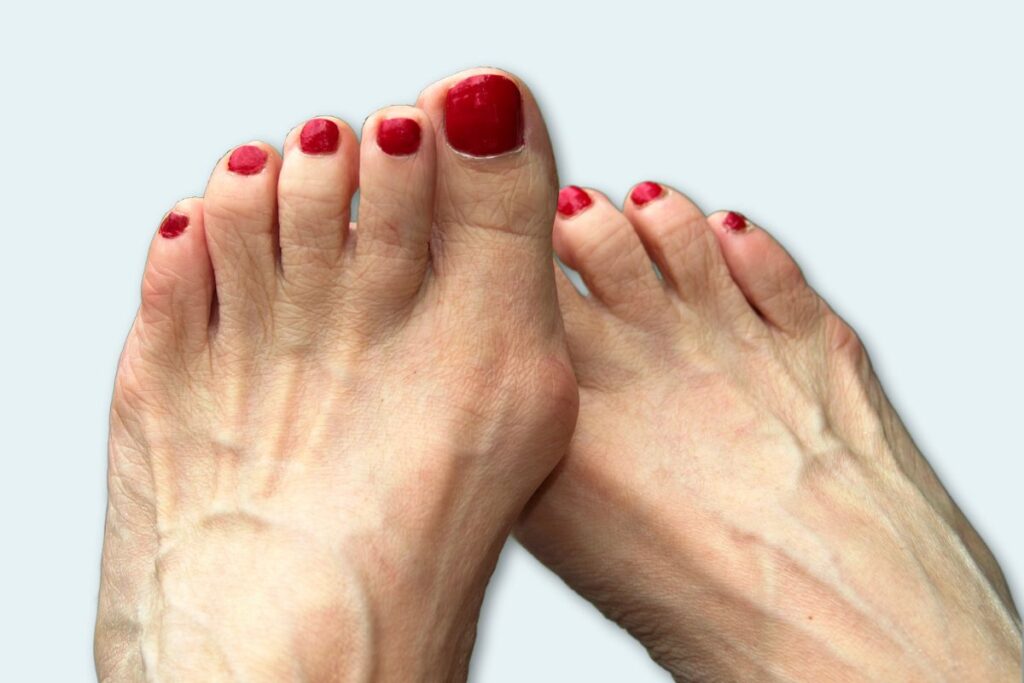
The big toe, called the hallux, is the most important toe in the foot for balance, agility, walking and stability. Therefore, any big toe deformity or disease process can be particularly debilitating. Studies show that even without pain, having bunions leads to reduced mobility and decreased quality of life.
There is always a misalignment with a bunion, however, pain may not always be present. Unless there is an corrective intervention, all bunions will worsen over time and cause damage with every step. They never resolve on their own.
Explanation and symptoms
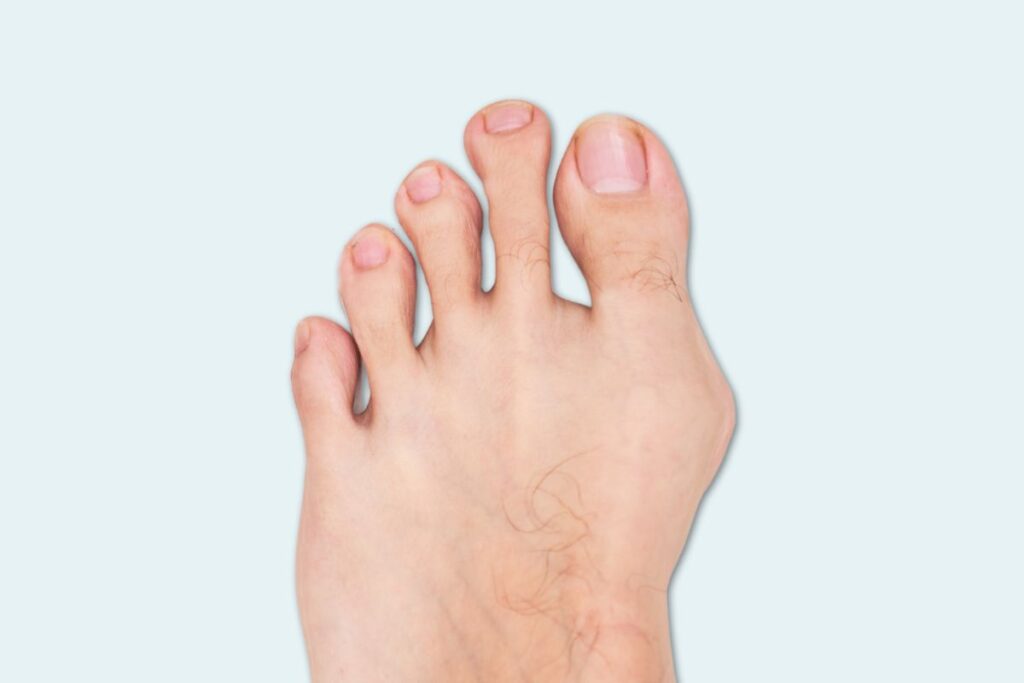
Bunions develop due to a combination damaging forces and abnormal foot mechanics. Both factors are caused by and will lead to abnormal alignment both within the foot and beyond it. Many people believe that bunions are caused by poor footwear choices, however bunions occur in 25% of the population including barefoot cultures. Footwear choices can certainly influence the severity of a bunion.
A bunion forms from a misalignment of the bones in the midfoot and forefoot, and lower extremities that causes the end of 1st metatarsal to drift toward the opposite foot, the big toe may remain straight or compensate for this drift and deviate towards the smaller toes. It is the misalignment, abnormal forces, and connective tissue dysfunctions both within the foot and external to it that create a bunion and when those forces go unchanged, cause it to worsen over time.
- Big toe Deformity: Formation of a bump on the arch side of the foot.
- Pain: Bunions can be painful, especially when walking or wearing tight shoes.
- Swelling: The bunion may become swollen and red.
- Difficulty in Shoe Selection: Finding shoes that fit comfortably may become challenging due to the deformity and wider shoes are required.
- Corns and Calluses: The bunion can cause increased pressure on the adjacent toes, leading to the development of corns and calluses.
- Limited Range of Motion: The big toe will alter the mechanics at the joint and cause limited mobility.

Goal of Treatment:
When choosing the best treatment for you, it is imperative that you select the correct treatment based upon your goal.
What is your goal in seeking natural bunion treatment?
TRADITIONAL BUNION TREATMENT FOR PAIN RELIEF
All traditional treatments potentially provide short term relief. when the forces are not corrected, damage occurs with every step.

1. Footwear Modification

2. Padding and Orthotics

3. Pain Medication
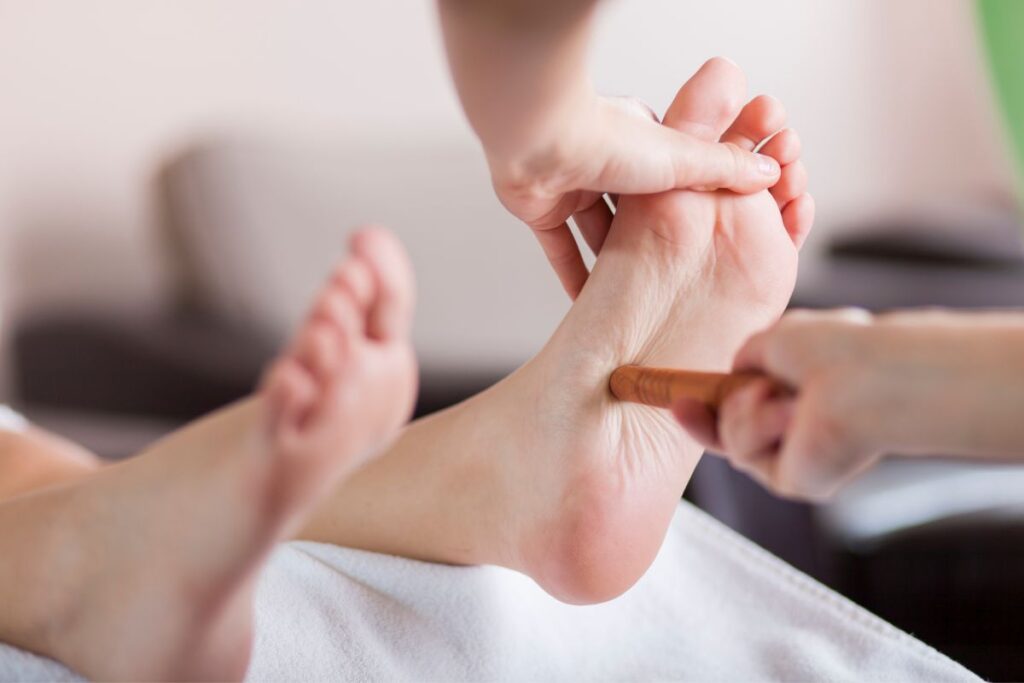
4. Physical Therapy

5. Injection Therapy

6. Surgery
- Footwear Modification: Wearing wider, more comfortable shoes with adequate toe room can reduce pressure on the bunion and alleviate symptoms.
- Padding and Orthotics: Special padding, toe spacers, or orthotic devices can help cushion the bunion and provide support for the arch of the foot. Research showed that a full-length orthotic used with a built-in toe spacer yielded the best results.
- Pain Medication: Non-steroidal anti-inflammatory drugs (NSAIDs) can be used to relieve pain and reduce inflammation.
- Physical Therapy: Exercises and stretches may be recommended to improve the strength and flexibility of the toes and feet. Training for Physical Therapists on the foot and especially the toes are limited. I can say this both as a Physical Therapist and an educator for Physical Therapists. It is recommended that patients inquire about their therapist’s level of experience when considering treating bunions with physical therapy.
- Injection Therapy: Corticosteroid injections can be administered to reduce inflammation and pain temporarily.
- Surgery: When conservative treatments are ineffective or the bunion is causing severe pain and deformity, surgical correction (bunionectomy) may be considered.
It is important to note that none of these treatments address:
- resolving the root cause of the problem
- restoring optimal function
- preventing future injury or recurrence
- resolving the root cause of the problem
- restoring optimal function
- preventing future injury or recurrence
functional corrective treatment for pain relief
When it comes to a multidimensional natural bunion treatment for pain, there are 8-steps that I have found to be effective they are:
- Decrease inflammation
- Incorporate analgesics.
- Protect the joint.
- Make an Appointment.
- Adjust your mindset-Take Action.
- Free Connective Tissue.
- Restore Alignment.
- Reinforce correct mechanics.
Numbers 6, 7, and 8 are steps in The Walker Treatment Method™
It is recommended that you begin these steps immediately when symptoms of pain occur.
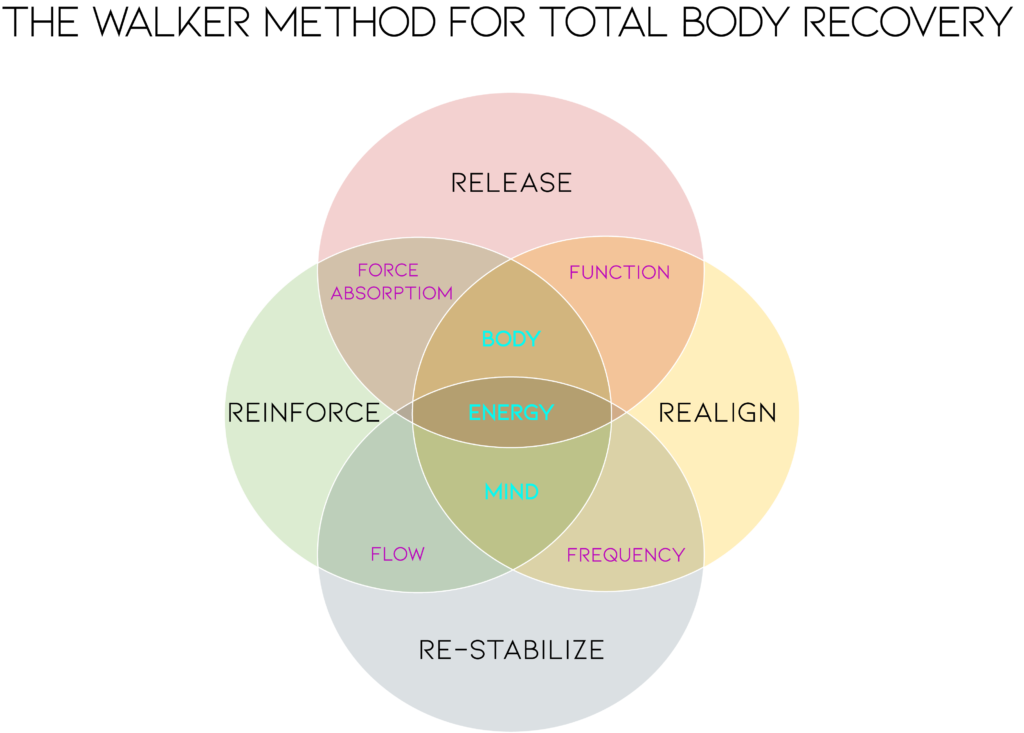
The Walker Treatment Method™
1. Decreases pain by offsetting the forces on the joint and with non-prescriptive modalities.
2. Corrects the negative forces using manual therapy, specific taping/bracing techniques, functional exercises.
3. Stabilizes the painful areas by addressing inflammation, functional strengthening & specific taping.
4. Prevents future problems by treating the root cause of a bunion and reversing negative compensations.
The Walker Treatment Method is the only treatment method for bunions that:
- Addresses the root causes of a problem and reverses the negative compensations that have occurred will prevent future problems
- Works to prevent bunion symptoms from recurring.
- Reverses the negative compensations that have occurred due to the bunion
COMPARISION OF TRADITIONAL TREATMENT AND THE WALKER TREATMENT METHOD™
Let’s compare the 2 treatment methods for pain-relief:
Bunion Pain

|
PAIN RELIEF | STABILIZE THE JOINT | CHANGE THE FORCES | PREVENTION FROM FUTURE PROBLEMS | ADDRESSES THE ROOT CAUSE | SUCCESS/SATISFACTION |
|---|---|---|---|---|---|---|
| FOOTWEAR | indirectly | no | yes | no | no | temporary |
| ORTHOTICS-SPACERS | indirectly | no | yes | no | no | average 47% |
| PHYSICAL THERAPY** | possibly | possibly | possibly | possibly | possibly | varies |
| INJECTION/NSAID | possibly | no | no | no | no | temporary |
| SURGERY*** | usually | yes | no | no | no | average 90% |
| WALKER METHOD* | indirectly | yes | yes | yes | yes | so far 100% |
***Surgery: Procedures will vary in their reports of success and are usually focused on aesthetics versus pain relief.
**Physical therapy: Results will vary based upon the therapist’s experience. As a patient it is important to inquire about the level of experience and success rate of any professional that you are seeking for help.
*Data is base upon post intervention survey report after program completion.
If you are aligned to invest more time to learn how to resolve bunion pain naturally, then take the next step.
The best time to resolve bunion pain is when you first experience symptoms.
The second-best time is now.
Not sure what to do?
Schedule a special $79 no BS actionable strategy evaluation.
Spaces are limited for this special offer!
BUNION TREATMENT FOR ALIGNMENT
Challenges with misalignment include:
- Footwear
- Balance
- Agility
- Sports and dance performance
- Problems in the foot, knee, hip and back
- Mobility
- Quality of life
- Confidence
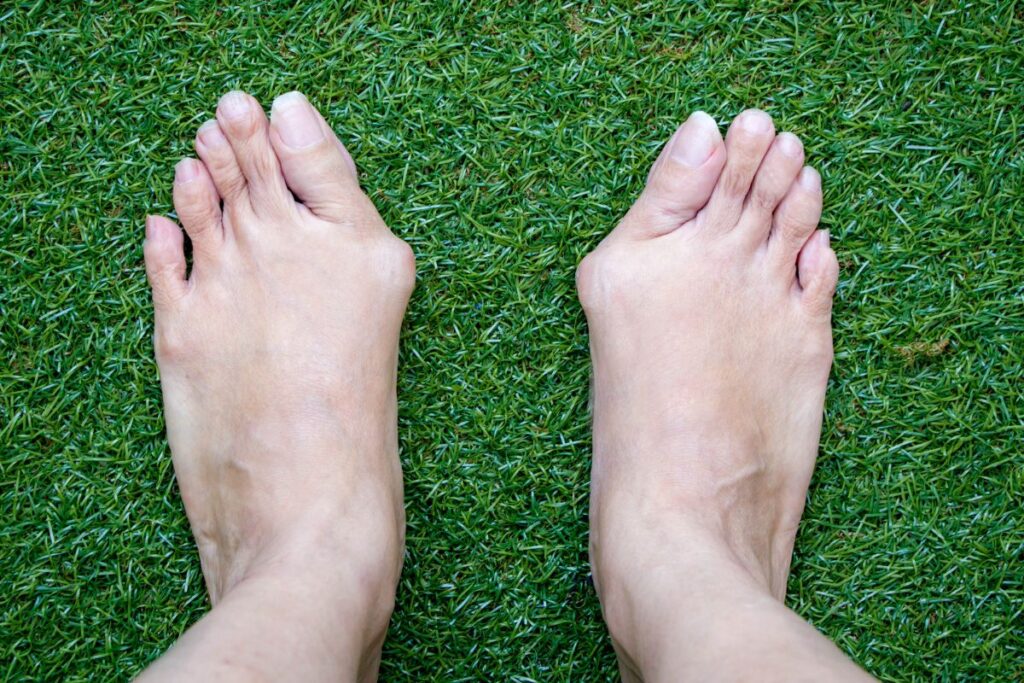
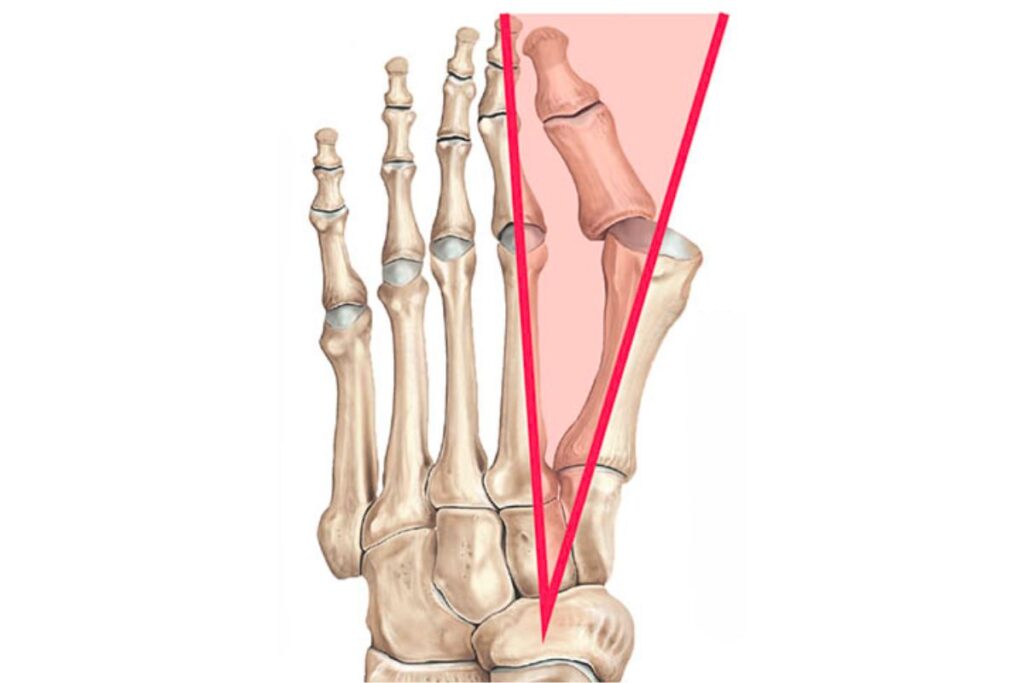
The severity of the misalignment of the big toe joint is measured in degrees and called the bunion angle. Bunion angles are determined by a professional using x-ray.
The degree of the bunion angle determines the classification of the traditional bunion type.
- Mild– less than 20 degrees
- Moderate– 20-40 degrees
- Severe – greater than 40 degrees
What I have found in my practice and what research supports is that there is a direct correlation between the ability to correct the alignment of a bunion and the severity of the bunion angle.
TRADITIONAL BUNION TREATMENT FOR ALIGNMENT

1. Bracing

2. Toe Spacers

3. Surgery

4. Physical Therapy
- Bracing: Research has found there to be a slight decreased bunion angle with mild and moderate bunions. There were limitations in this study as the measurements were performed in sitting which is not a functional position for the foot. Additionally, 2/3 of bunions are influenced by factors above the foot and usually will worsen in standing. See research links below.
- Toe Spacers: Research has found there to be a slight decreased bunion angle with mild bunions only. There were the same study limitations as mentioned above. See research links below.
- Surgery: Various surgical techniques are available to address bunions, including osteotomy (cutting and realigning the bones), arthrodesis (joint fusion) and minimally invasive (keyhole) surgery. Surgical operations reduce mobility of the big toe, fail on average 10-25%, and have a risk of serious surgical complications like infections 0.5-6.5%, blood clots, deformities, and even amputations. Results will vary among procedures and surgeons. It is recommended that you research your doctor and ask about their results and experience.
- Physical Therapy: Most PT’s focus on symptoms management only. Training for Physical Therapists on the foot and especially the toes is limited. I can say this as a Physical Therapist and an educator for Physical Therapists. Results will vary and it is recommended that you ask about a PT’s experience and success with treating bunions.
A bunion usually results from dysfunctions elsewhere in the foot, lower leg, and pelvis. There are over 100 connective tissues and at least 56 joints that can negatively impact the big toe. This is why research has shown that after several years bunions will return 20-25% of the time even after surgery. This should be a question to address with your doctor.
functional corrective treatment for alignment
The first step to a comprehensive bunion treatment is identifying your Functional Bunion Type.
Functional Bunion Classification for Alignment
The root cause of bunions is not a problem at the big toe joint.
The most important factor to a successful outcome with any type of bunion treatment is knowing the root cause of your bunion. That is why I created a functional classification system to describe the root cause of different bunion types. Using the Functional Bunion Type Classification a correlation can be made between a bunion’s functional characteristics, and a person’s prognosis for natural bunion treatment success.
Additionally, the appropriate and effective course of functional corrective bunion treatment is unique for each Functional Bunion Type.
What I have found clinically is that there are 3 different functional bunion types each with a different root cause that drives the deformity and causes it to worsen over time.
Each Functional Bunion Type, requires a different treatment plan.
To determine your Functional Bunion Type, does your bunion look like:
It is important to note that people with bunions on both feet, may have 1 Functional Bunion Type on 1 foot and a different Functional Bunion Type on another.
Functional Bunion Types
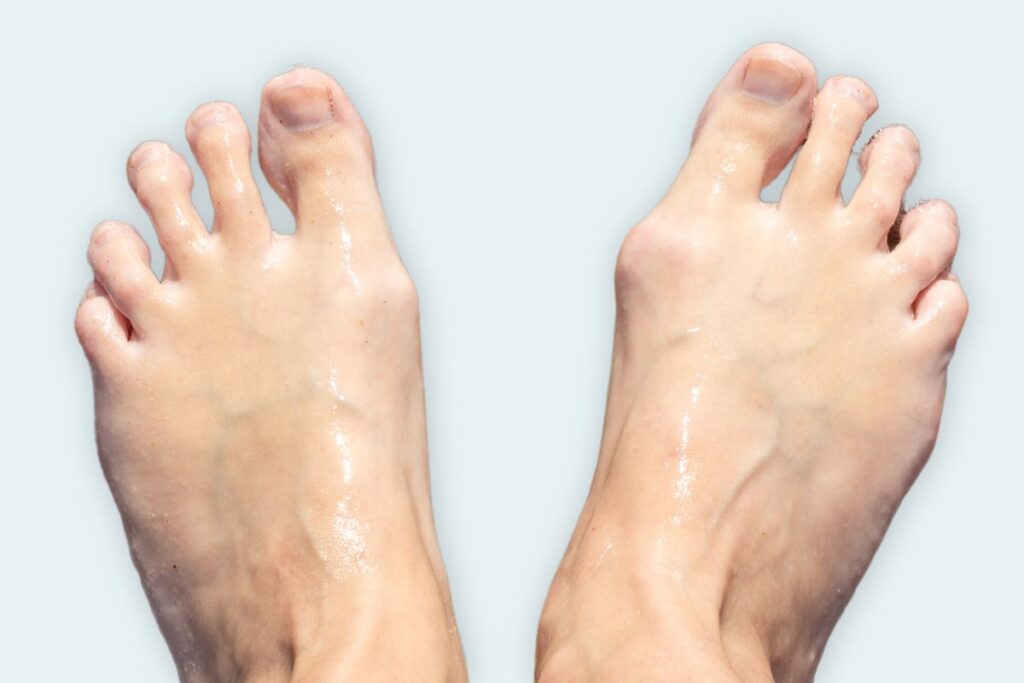
Forefoot Bunion:
This bunion type presents with the inside ankle bone being in line with both the arch of the foot and big toe. This is the easiest bunion to resolve naturally. I have found that the appearance of this bunion type and the pain associated with it, resolves in 2-4 visits. Using The Bunion Solution™ DIY program, results are noticed in the 1st week and typically a complete resolution of this bunion occurs in 6-8 weeks.

Midfoot Bunion:
This bunion type presents with the inside ankle bone being inline with the big toe, but the arch of the foot is narrow. It essentially looks like a normal foot, except there is a bone sticking out to the side. There may or may not be a deviation of the toe toward the 2nd toe. If there is a deviation it is minor. People with this Functional Bunion Type tend to have a high arch and narrow ankle. This is more of a challenge to resolve both naturally and surgically because there are dysfunctions causing the bunion to form both within the foot and external to it at the lower leg. When I work directly with this bunion type, it typically takes 2-4 visits to resolve pain and 4-6 visits to change the alignment. Using The Bunion Solution™ DIY Program, pain is resolved in and changes in appearance is typically noticed after 2 weeks. The aesthetic improvement of the bunion takes longer a full 6-8 weeks. With this bunion type, there may still be a bump, however it’s size is diminished usually by about 30% after 8 weeks. The bunion will not worsen over time and will continue to improve.
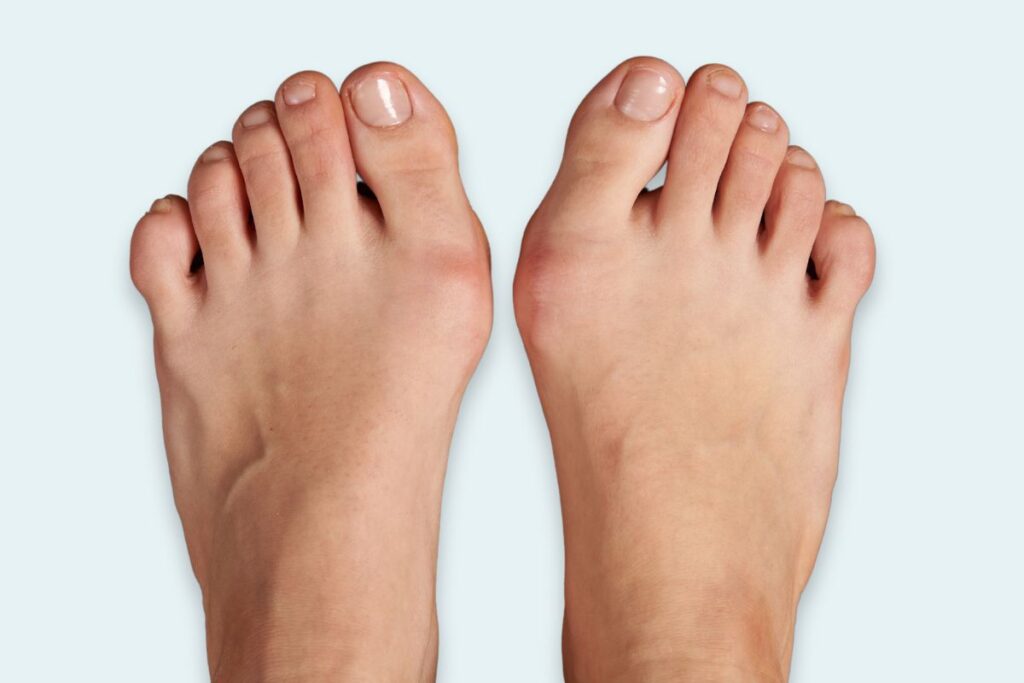
Walking Bunion:
This bunion presents with the inside ankle bone being in line with the arch of the foot, but a there is a noticeable deviation of the big toe toward the 2nd toe, I term this a Walking bunion. With this bunion type there are dysfunctions found in, the foot, lower, leg, thigh and pelvis that cause this type of bunion. Like all bunions the abnormal forces that injure the joint worsen with every step. According to surgeons who I have spoken with, this is the most difficult bunion type to resolve surgically. Therefore a prehab (before surgery preparation) program is recommended. This bunion, can be found with individuals who have a high arch but it is usually associated with a pronated (flat) foot. Depending on severity of the deviation of the big toe, this bunion takes 2 visits to resolve pain and 6-10 visits to gain a 30% improvement in alignment. Using The Bunion Solution™ DIY Program, improvement is typically noticed after 2 weeks and aesthetic improvement of the bunion requires a full 8 weeks. The bunion will not worsen over time and will continue to improve with maintenence.
If you are unsure, of your functional bunion type:
Follow the step-by-step video instructions to figure it out
Schedule a Consultation-Strategy call with DL.
Functional corrective bunion treatment will require the appropriate treatment of the impacted joints and connective tissues that are unique to each bunion type. Traditional bunion realignment surgery addresses 1 or 2. This is why, traditional methods, even surgery will have bunions reforming after a period of time.
Now that you understand a bit about your prognosis, let’s compare treatment options alignment.
Comparison of Traditional and Comprehensive Bunion Treatment

|
PAIN RELIEF | STABILIZE THE JOINT | CHANGE THE FORCES | PREVENTION FROM FUTURE PROBLEMS | ADDRESSES THE ROOT CAUSE | SUCCESS/SATISFACTION |
|---|---|---|---|---|---|---|
| ORTHOTICS-SPACERS | none | no | no data | no | no | 2-6 degree decrease |
| PHYSICAL THERAPY** | none | possibly | possibly | possibly | possibly | varies |
| SURGERY*** | about 10% | yes | average 75% | no | no | 10-15 degree decrease |
| WALKER METHOD* | none | yes | average 93% | yes | yes | 30% decrease in bunion angle |
***Surgery: Procedures will vary in their success. As a patient it is important to inquire the level of experience and success of any professional that you are considering working with.
**Physical therapy: Results will vary based upon the therapist’s experience. As a patient it is important to inquire the level of experience and success of any professional that you are considering working with.
*Data is base upon post intervention survey report after program completion.
The goals of functional corrective Natural Bunion Treatment for Alignment are as follows:
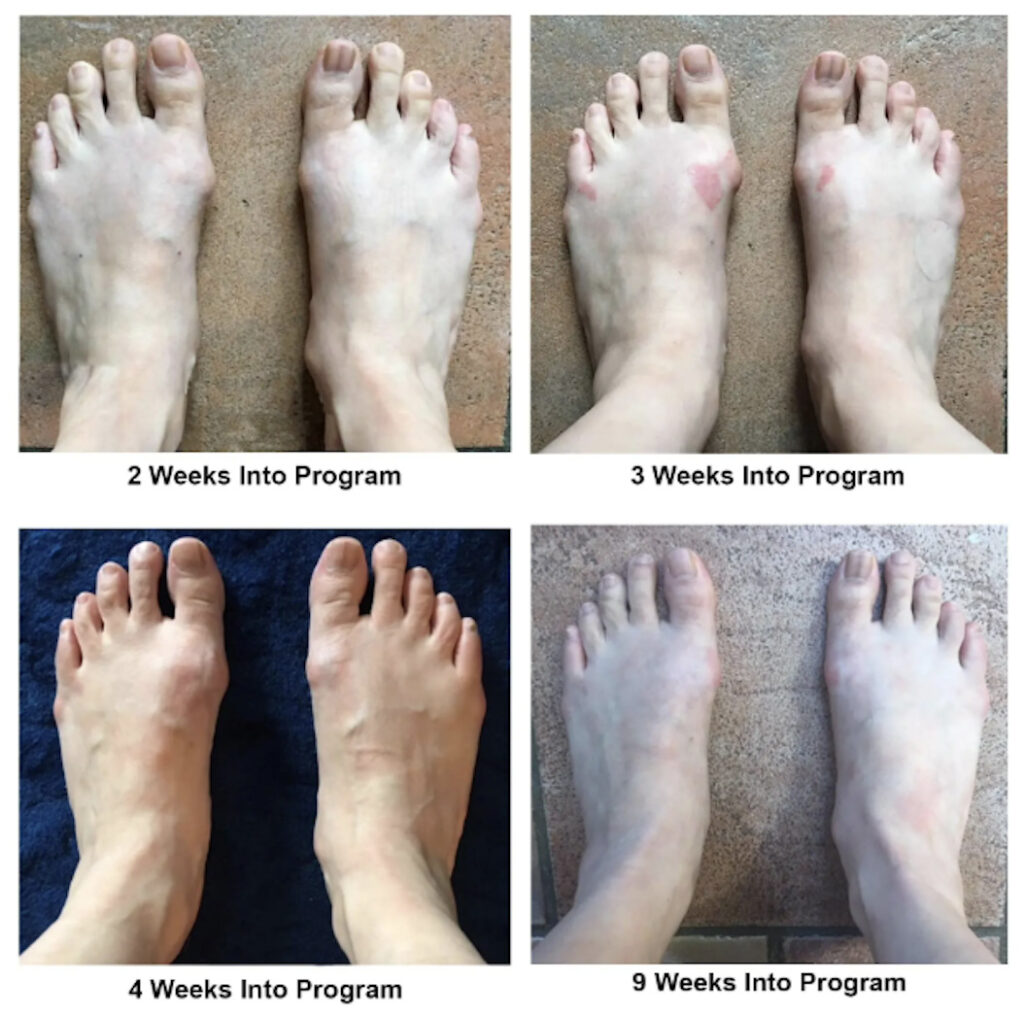
- Decrease inflammation to improve stability
- Identify and treat the root cause.
- Free connective tissue
- Restore alignment
- Change the forces that are causing the compensations within the foot and beyond it
- Postural re-education within the foot and beyond it
- Prevent future problems directly or indirectly related to this diagnosis
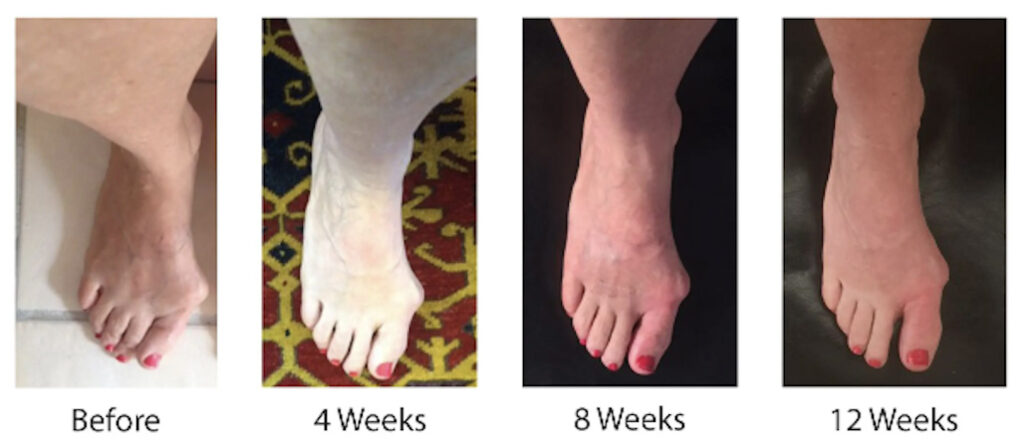
There are 100’s connective tissues and 57 joints that can cause abnormal forces leading to Hallux Valgus. These abnormal forces are caused by skeletal misalignment and connective tissue restrictions in the toes, foot, lower leg, thigh and hip regions. Evaluating a person’s quality of motion using a tool called Function Diagnostic Evaluation we pinpoint the misalignment and connective tissue restrictions that are causing abnormal forces to act on the joint and injure it. Then we resolve them and address all symptoms using multidimensional treatment model called The Walker Treatment Method™.
To correct a bunion naturally it is imperative that there is correct identification of structural dysfunctions causing it to worsen.

The Walker Treatment Method™
- Decreases inflammation by offsetting the forces on the joint and with non-prescriptive modalities.
- Corrects abnormal forces using manual therapy, specific taping/bracing techniques, and functional exercises.
- Mobilizes the areas of foot and lower leg to decrease the stress on the big toe joint.
- Stabilizes the painful areas by addressing inflammation, functional strengthening, and specific taping.
- Prevents future problems by addressing patient education, release, alignment, and stabilization, of the entire lower body.
- Corrects negative compensations in walking that have occurred due to pain and a lack of motion.
- Address the root causes of the problem providing long-term success.
If you are aligned to invest more time to learn how to resolve bunion pain and alignment naturally, then take the next step.
Like a car's tire without air, having bunions will damage your body with every step and become worse when neglected. The best time to resolve bunions naturally is when you first experience symptoms.
The second-best time is now.
Not sure what to do?
Schedule a special $79 no BS actionable strategy evaluation.
Spaces are limited for this special offer!
References:
Complication rates for Inpatient surgery and outpatient foot surgery: https://www.ncbi.nlm.nih.gov/pmc/articles/PMC6464278/
Orthotics and Hallux Valgus: https://www.ncbi.nlm.nih.gov/pmc/articles/PMC9564465/
Hallux Valgus Angle and Correction: https://www.ncbi.nlm.nih.gov/pmc/articles/PMC2405780/
Toe Spacers and Braces: https://www.ncbi.nlm.nih.gov/pmc/articles/PMC9564465/
Bunion Recurrence Rate: https://www.ncbi.nlm.nih.gov/pmc/articles/PMC8708542/
Bunion and orthotics/toe spacers: https://www.ncbi.nlm.nih.gov/pmc/articles/PMC8375760/
Not sure what to do?
Schedule a special $79 no BS actionable strategy evaluation.
Spaces are limited for this special offer!

Who is DL Walker, BS., MS., Ed, PT?
Deborah L Walker Goetz, BS., MS., Ed, PT is the creator of unique, comprehensive programs, protocols and course work for organizations, professionals and the public.
As a diagnostic detective she works to identify the root cause of dysfunction that that triggers an the experience of disease, pain, and limitation. Working with clients, she creates a strategic plan of action that aligns with their unique circumstances and empowers them to get the results that they are seeking fast.
DL works both online and in person and offers a 30-minute strategic consultation to assist clients in their best next steps.
CLICK HERE to learn more.